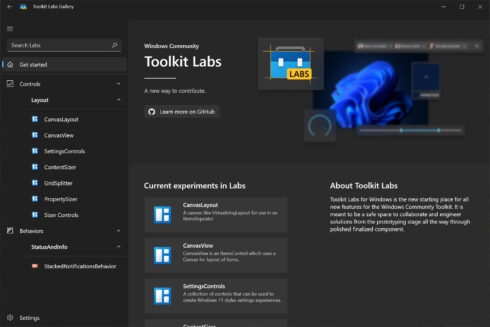
The team at Microsoft recently announced that the Windows Community Toolkit Labs is now the primary way that the company will be developing new features for Windows Community Toolkit. It is intended to act as a safe space for collaboration and engineering solutions from the prototyping stage all the way through polished and finalized component.
According to Microsoft, the Windows Community Toolkit Labs will make it easier for users to contribute to the toolkit, try out new features still in development, and cooperate together on the development process.
The new “Labs” repository will hold discussions about new items and development along with initial ‘experiments’ that will each represent a new component (or set of related components) that will begin its journey from an initial implementation to a well-tested feature working through a defined set a criteria and quality gates along the way.
With Windows Community Toolkit Labs users can make changes in Labs, try out new ideas, and not have to worry about having code needing to be ‘shippable’ in order to make its way to the repository.
With this, the company can more easily gather feedback from developers, collaborate with users on the component, tests, and documentation, and reduce the overhead on reviewing monolithic PRs.
Quality gates can then be abstracted as a part of this process and incrementally review and move components from the prototyping stage towards a production quality component.
Several experiments have already been set up, including CanvasLayout, a prototype virtualized canvas view on top of ItemsRepeater; CanvasView, a Panel based templated ItemControl using a Canvas which supports basic manipulation out-of-the-box; SettingsCard, a component for providing a consistent settings experience for your app; and more.
To get involved and help with Labs, click here for the issue list and join the discussions. After version 7.1.3 of the Toolkit is released, the Microsoft team will begin opening Labs to new experiments and focusing on moving new development there. To learn more, visit the website.






